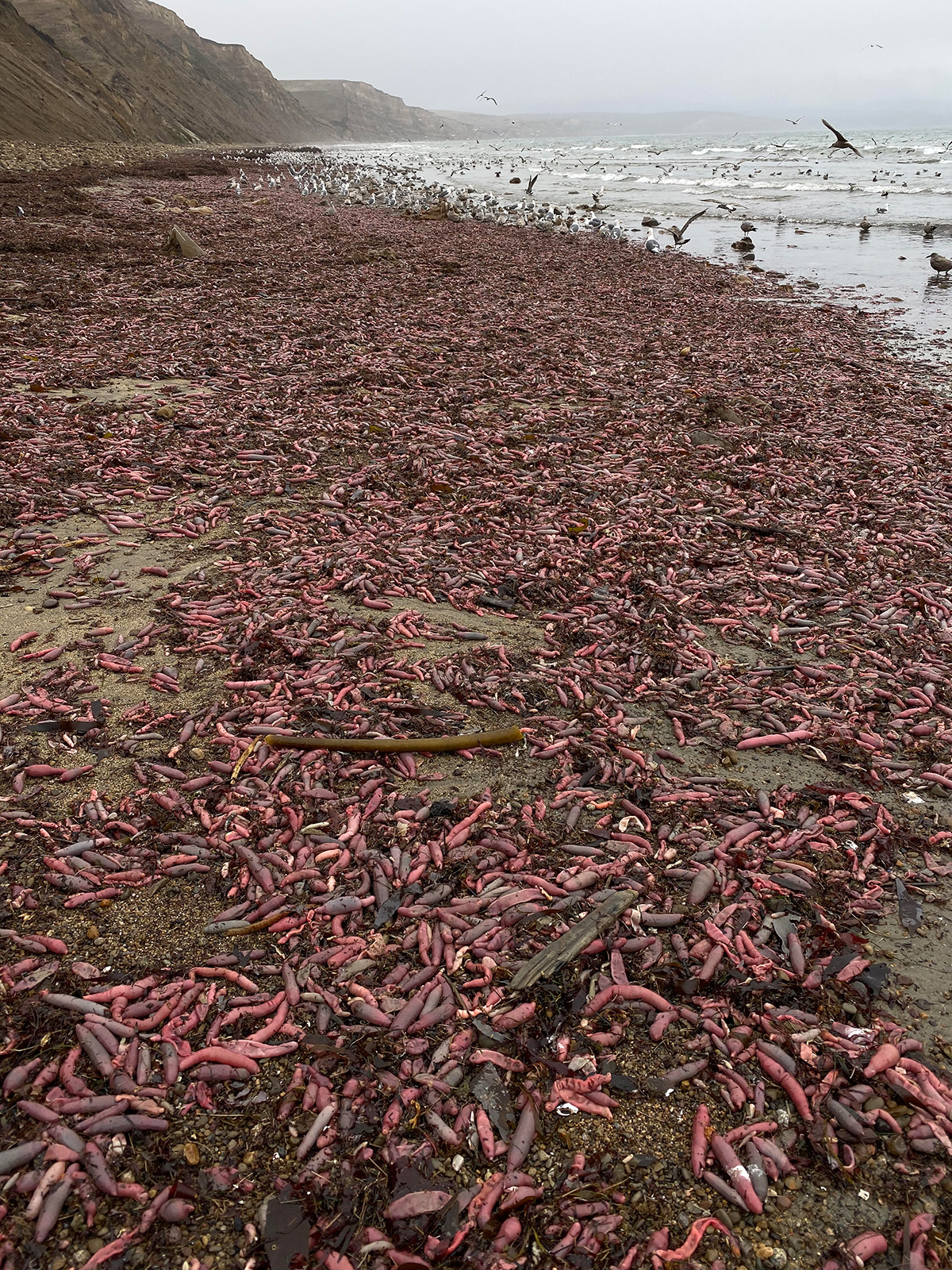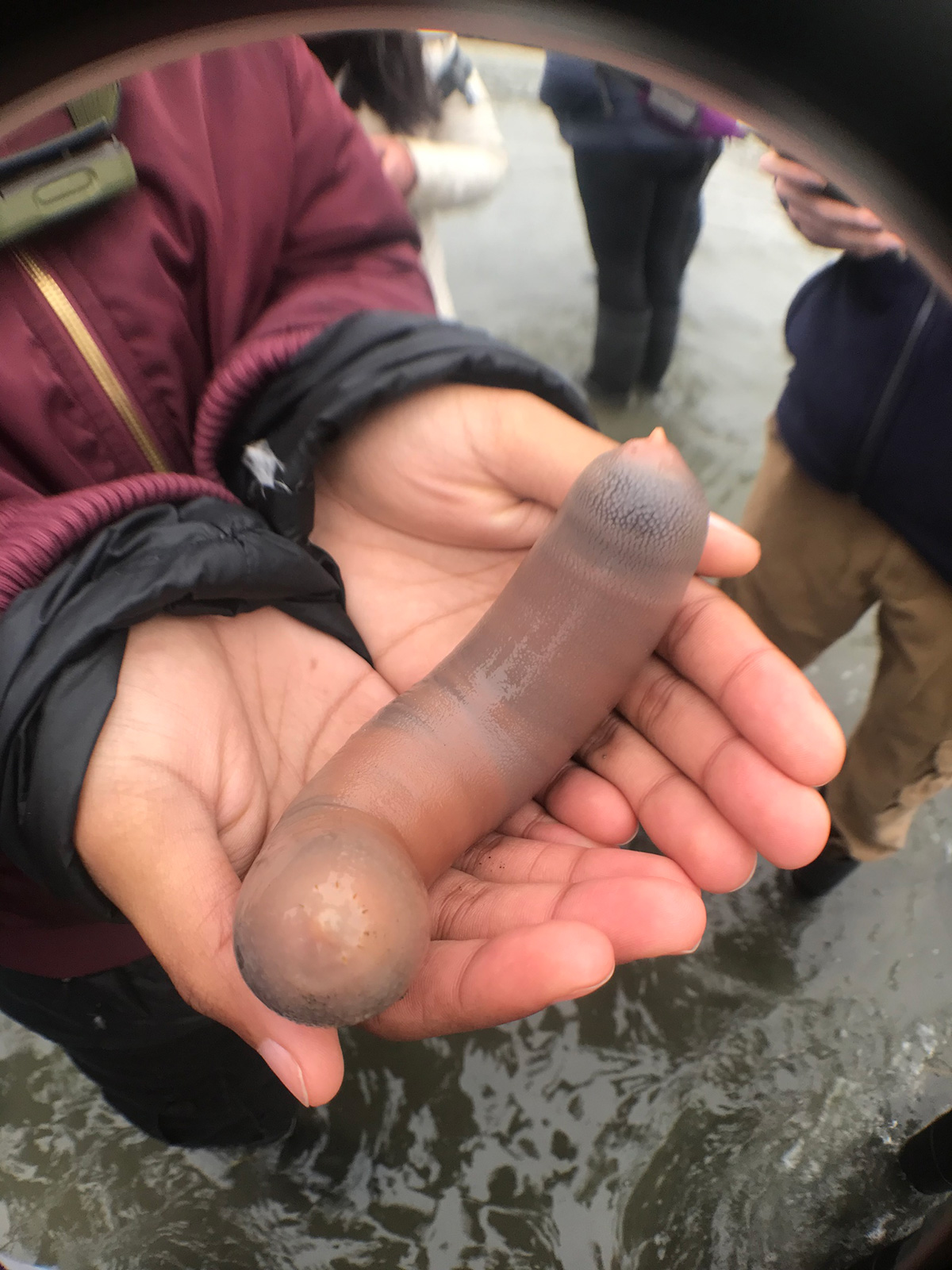Biologists found thousands of fat innkeeper worms, also known as ‘p*nis-fish’, on the shore of Drakes Beach in California after a recent storm.
The 10-inch fat innkeeper worms were forced to pull out of their underwater homes due to a recent storm and they were left on the shore of Drakes Beach in California.
Biologists Ivan Parr spotted thousands of fat innkeeper worms on the shore of Drakes Beach in California.
Parr wrote for Bay Nature: “The same phenomenon has been reported over the years at Pajaro Dunes, Moss Landing, Bodega Bay, and Princeton Harbor. I’ve heard my share of imaginative theories from beachcombers, such as flotsam of a wrecked bratwurst freighter.”
“In truth, these are living denizens of our beaches rudely, yet also mercifully, mostly called ‘fat innkeeper worms.”
He added: “And then there are phenomena such as the one depicted in this photo.
So how did thousands of fat innkeeper worms get strewn across Drakes Beach? Well, we’re seeing the risk of building your home out of sand. Strong storms – especially during El Niño years – are perfectly capable of laying siege to the intertidal zone, breaking apart the sediments, and leaving their contents stranded on shore.
”
“Do these high-energy storm events have a long-term impact on fat innkeepers? So far as I know, there are no programs explicitly taking stock of the worms. However, you can help monitor this and other species by continuing to use citizen science to report mass strandings, noting when and where they took place, and roughly how many stranded worms you see.”
The fat innkeeper worm is a type of spoonworm (Ehciuroidea). They have spatula-shaped limb which they use to both feed and swim.
The fat innkeeper worm spends most of its existence underground and lives for up to 25 years.
They live on bacteria, plankton, and other smalls particles. According to experts, they are harmless creatures.
[rumble video_id=v16nvq domain_id=u7nb2]





